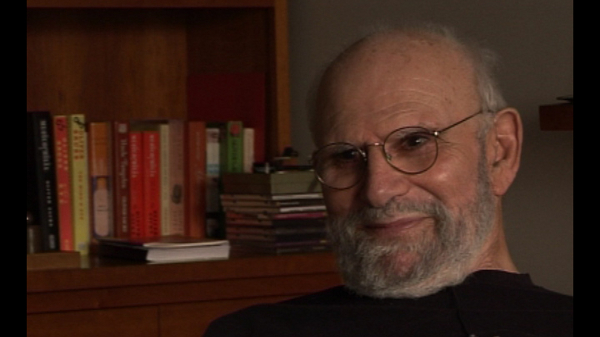NEXT STORY

My dream: The Tourette’s Syndrome Society
RELATED STORIES

NEXT STORY

My dream: The Tourette’s Syndrome Society
RELATED STORIES


|
Views | Duration | |
|---|---|---|---|
| 141. Reasons for agreeing to Awakenings documentary | 304 | 01:43 | |
| 142. Success of Awakenings documentary | 466 | 00:38 | |
| 143. 'Witty Ticcy Ray' | 783 | 01:38 | |
| 144. My new interest in Tourette’s syndrome | 474 | 02:12 | |
| 145. My dream: The Tourette’s Syndrome Society | 291 | 01:25 | |
| 146. Working on Ward 23 with autistic, psychotic and retarded patients | 495 | 02:56 | |
| 147. 'Therapeutic punishment' | 340 | 01:53 | |
| 148. Appetitive and consummatory states | 286 | 02:10 | |
| 149. The accidents in Norway | 354 | 03:50 | |
| 150. Inspecting my grotesquely broken leg | 311 | 03:17 |


Seeing these people in New York amazed me in two ways. First, Tourette’s had been... was described at that time, as extremely rare, and as occurring perhaps one in half a million. And I thought, if I’m not mistaken, it’s at least a thousand times commoner, which in fact is just about right. Secondly, I thought I must have been blind not to see this before. I needed to see someone with Tourette’s closely, and get an idea what it was like, then I could recognise it in the streets. And this made me think of... of many things in the history of neurology. Muscular dystrophy had been described for the first time in the late 1850s, and following the initial case description dozens of descriptions appeared. And [Jean-Martin] Charcot said, ‘Why... why did we need...’ Charcot said, ‘The disease has always existed, it’s ubiquitous, it’s not uncommon, why did we need Monsieur Duchenne [de Boulogne] to open our eyes?’
Well anyhow, seeing Ray opened my eyes to Tourette’s. And it had quite a lot in common with the post-encephalitic patients, partly in the wild activation of subcortical mechanisms of various sorts. And... but it was also in another way richer, because the... these were people living in the real world and reacting to others. And so an intense new interest came to me in Tourette’s syndrome after seeing Ray.
Oliver Sacks (1933-2015) was born in England. Having obtained his medical degree at Oxford University, he moved to the USA. There he worked as a consultant neurologist at Beth Abraham Hospital where in 1966, he encountered a group of survivors of the global sleepy sickness of 1916-1927. Sacks treated these patients with the then-experimental drug L-Dopa producing astounding results which he described in his book Awakenings. Further cases of neurological disorders were described by Sacks with exceptional sympathy in another major book entitled The Man Who Mistook His Wife For A Hat which became an instant best seller on its publication in 1985. His other books drew on his rich experiences as a neurologist gleaned over almost five decades of professional practice. Sacks's work was recognized by prestigious institutions which awarded him numerous honours and prizes. These included the Lewis Thomas Prize given by Rockefeller University, which recognizes the scientist as poet. He was an honorary fellow of both the American Academy of Arts and Letters and the American Academy of Arts and Sciences, and held honorary degrees from many universities, including Oxford, the Karolinska Institute, Georgetown, Bard, Gallaudet, Tufts, and the Catholic University of Peru.
Title: My new interest in Tourette’s syndrome
Listeners: Kate Edgar
Kate Edgar, previously Managing Editor at the Summit Books division of Simon and Schuster, began working with Oliver Sacks in 1983. She has served as editor and researcher on all of his books, and has been closely involved with various films and adaptations based on his work. As friend, assistant, and collaborator, she has accompanied Dr Sacks on many adventures around the world, clinical and otherwise.
Tags: Jean-Martin Charcot, Duchenne de Boulogne
Duration: 2 minutes, 12 seconds
Date story recorded: September 2011
Date story went live: 02 October 2012